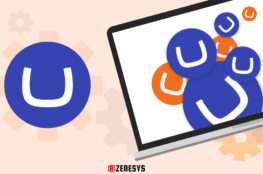Umbraco CMS is a powerful content management system that stands out among its competitors, winning over developers around the world. This open-source platform offers both flexibility and scalability, making it the perfect choice for projects of any size.
Developers are drawn to Umbraco for its unique combination of features:
- Built on the robust .NET framework
- Clean, intuitive interface
- Extensive customisation options
- Strong security architecture
- Cloud-ready deployment capabilities
The platform’s architecture allows developers to create sophisticated digital solutions without the complexity often associated with enterprise-level systems. Its proven track record of delivering ROI while maintaining development efficiency has established Umbraco as a go-to choice for technical teams.
Modern Umbraco CMS migration features address critical enterprise needs:
- Speed: Rapid development and deployment cycles
- Simplicity: Straightforward content management
- Scalability: Adaptable architecture for growing demands
- Integration: Seamless connection with third-party services
With 750+ positive reviews on G2 and a thriving global community, Umbraco continues to evolve, offering developers the tools they need to build future-proof digital experiences. The platform’s commitment to innovation, coupled with its user-friendly approach, creates an environment where developers can focus on crafting exceptional solutions rather than wrestling with technical constraints.
1. Modern Development Framework and Technology Stack
Umbraco is built on Microsoft’s .NET framework, making it a leader in modern web development. Using C# and ASP.NET, this powerful technology stack offers:
- Seamless integration with Visual Studio and Azure cloud services
- Strong typing and error checking during compilation
- Enhanced security through built-in features of the framework
- Faster development cycles with modern tools
The CMS’s compatibility with .NET 7 brings significant performance improvements and the ability to run on multiple platforms. Developers can take advantage of:
- Advanced language features in C# 11
- Better memory management
- Improved debugging tools
- Smooth deployment options to the cloud
This technology foundation allows development teams to create scalable and maintainable applications while keeping up with Microsoft’s latest innovations. The platform’s commitment to staying updated with .NET releases ensures that projects remain technologically relevant and perform well.
2. Intuitive Content Editing Tools
Umbraco’s Block Grid Editor has transformed content creation by providing a user-friendly interface that allows for visual editing and easy rearrangement of elements. This means that content editors can now create complex page designs without needing any technical skills or knowledge.
The Block Grid Editor offers a wide range of pre-designed blocks that can be used to build web pages. These blocks include:
- Basic text sections for displaying written content
- Image blocks for showcasing visuals
- Video blocks for embedding multimedia
- Custom HTML blocks for advanced users who want more control over their designs
With the Block Grid Editor, content editors have the flexibility to mix and match these blocks to create unique layouts that suit their needs. They can also easily move blocks around, resize them, and customize their appearance using the built-in styling options.
Advanced Editing Features with TipTap
To further enhance the editing experience, Umbraco has integrated TipTap rich text editor into its platform. This powerful editor provides additional features and capabilities for content editing:
- Preview changes in real-time: With TipTap, content editors can see exactly how their changes will look on the published website without having to refresh or switch between different views.
- Custom formatting options: TipTap allows users to apply various formatting styles such as headings, lists, quotes, and more with just a few clicks.
- Accessibility features: Ensuring accessibility is crucial in web design. TipTap includes built-in accessibility tools that help content editors create inclusive content by adding alt text to images and ensuring proper heading structure.
- Markdown support: For technical content or developers who prefer working with markup languages, TipTap supports Markdown syntax which makes it easy to format text quickly.
Flexible Layouts with Block Grid System
The Block Grid Editor also introduces a new way of organising and structuring page layouts through its fluid architecture. This means that web pages created using this editor will automatically adjust and adapt based on different screen sizes and devices.
Some key features of the Block Grid system’s flexible layouts include:
- Responsive design elements: Blocks within the grid can be set to resize proportionally or stack vertically on smaller screens, ensuring optimal viewing experience across all devices.
- Nested content structures: Content editors can create complex layouts by nesting grids within grids, allowing for even more flexibility in design.
- Reusable content blocks: If there are certain sections or components that are frequently used across multiple pages, content editors can save them as reusable blocks which can be easily inserted into any layout.
- Custom grid configurations: The Block Grid Editor also allows users to define their own grid settings such as number of columns, spacing between blocks etc., giving them complete control over how their layouts look.
These intuitive editing tools empower marketing teams to take charge of their website content creation process. By eliminating reliance on developers for every small change or update, they can work more efficiently and maintain consistency in design across all pages.
3. Customisable Workflows for Streamlined Content Management
Umbraco’s workflow customisation capabilities empower development teams to create tailored approval processes that align with specific organisational structures. The platform supports multi-step approval chains, allowing content to move seamlessly through different stakeholders before publication.
Key workflow features include:
- Custom approval stages based on content types
- Role-based permissions for different user groups
- Automated notifications for pending approvals
- Parallel review tracks for simultaneous feedback
Marketing teams can initiate content updates while developers maintain control over technical implementations through granular permissions. The system tracks changes automatically, creating audit trails for compliance requirements.
Teams can establish automated publishing schedules with built-in quality checks, eliminating manual intervention for routine content updates. This automation reduces publishing delays and ensures content reaches audiences at optimal times.
4. Advanced API Integrations and Extensibility
Umbraco 15 introduces Client Credentials authentication, enabling secure API integrations with external platforms. This robust authentication method allows developers to:
- Create secure token-based connections
- Implement role-based access control
- Manage API permissions granularly
The platform’s extensibility shines through its ability to connect with third-party services. Developers can integrate:
- Payment gateways
- Marketing automation tools
- Analytics platforms
- Social media APIs
- Custom microservices
These integrations expand Umbraco’s native capabilities through a standardised approach. The platform’s API-first architecture supports both REST and GraphQL endpoints, allowing developers to build complex integrations while maintaining security protocols. Custom endpoints can be created to match specific business requirements, making Umbraco adaptable to diverse technical ecosystems.
5. Search Abstraction Layer for Enhanced Search Capabilities
Umbraco’s search abstraction layer transforms site search functionality by seamlessly integrating external search engines. This powerful feature enables developers to implement advanced search solutions without complex coding requirements.
The abstraction layer supports multiple search providers:
- Examine – Built-in search provider
- Azure Search
- Elasticsearch
- Algolia
Developers can implement advanced search features:
- Faceted navigation
- Fuzzy matching
- Multi-language search
- Custom relevance scoring
- Real-time indexing
The search abstraction layer maintains a consistent API interface regardless of the chosen search provider, allowing teams to switch between different search solutions without extensive code modifications. This flexibility proves invaluable for projects with evolving search requirements, enabling seamless upgrades to more sophisticated search engines as site needs grow.

6. Containerisation Support for Scalable Deployments
Umbraco’s robust containerisation capabilities streamline development workflows through native Docker compatibility. Developers can package applications with dependencies into lightweight, portable containers – creating consistent environments across development, testing, and production stages.
The platform’s Docker integration enables:
- Rapid deployment of isolated environments
- Consistent testing across different stages
- Resource-efficient scaling of applications
- Simplified dependency management
Kubernetes orchestration amplifies these benefits by providing:
- Automated container deployment
- Self-healing capabilities
- Load balancing
- Horizontal scaling
This containerisation support aligns with modern DevOps practices, allowing teams to implement continuous integration/continuous deployment (CI/CD) pipelines. Development teams can leverage infrastructure-as-code principles to version-control their deployment configurations, ensuring reproducible environments across different cloud providers and data centres.
7. Performance Optimisation with CDN Caching in Umbraco Cloud
Umbraco Cloud uses Content Delivery Network (CDN) caching to transform website performance. The CDN distributes content across multiple geographical locations, creating a network of cached versions ready for instant delivery to users worldwide.
Key Performance Benefits:
- Reduced server load through distributed content delivery
- Minimised latency with local server access
- Automatic cache updates when content changes
- Built-in DDoS protection
The implementation of CDN caching directly impacts search engine rankings. Google’s algorithm prioritises fast-loading websites, making CDN-enabled Umbraco sites more competitive in search results. Internal testing shows up to 60% improvement in page load times when CDN caching is properly configured.
Umbraco Cloud’s CDN integration allows developers to:
- Set custom cache rules
- Configure cache invalidation patterns
- Monitor cache performance metrics
- Optimise content delivery paths
8. Headless CMS Capability via Umbraco Heartcore
Umbraco Heartcore is a game-changer for content management with its headless CMS design, giving developers the power to create complex digital experiences. The platform’s strong focus on APIs makes it easy to build separate frontends using popular frameworks like React, Vue, or Angular.
Key features include:
- RESTful API endpoints for delivering and managing content
- GraphQL support for precise data querying
- Built-in content modelling tools for organising structured data
This flexible design allows developers to deliver content across various channels:
- Progressive web applications
- Native mobile apps
- IoT devices
- Digital signage
- Smart displays
- Voice-activated systems
The platform’s ability to work with any programming language lets development teams use their preferred technology stack while still having centralised control over content through Umbraco’s user-friendly interface.
9. Enhanced E-commerce Features with Umbraco Commerce
Umbraco Commerce transforms standard websites into powerful online stores through its robust e-commerce capabilities. The platform’s advanced order processing system handles transactions with remarkable speed, enabling merchants to process hundreds of orders simultaneously without performance degradation.
Key features include:
- Lightning-fast checkout process with response times under 200ms
- Multi-currency support for global commerce operations
- Real-time inventory management across multiple store locations
The platform’s flexible architecture allows seamless integration with popular e-commerce solutions:
- Native compatibility with Shopify’s API
- Built-in support for uCommerce extensions
- Custom payment gateway implementations
Developers can leverage pre-built commerce components while maintaining the freedom to create bespoke shopping experiences. The platform’s modular design supports both simple product catalogues and complex marketplace implementations, making it suitable for businesses of all sizes. Click here to get more about
10. Advanced Content Scheduling and Management Tools
Umbraco’s Release Sets feature gives content teams precise control over when their content is published. Content managers can schedule multiple pieces of content to be published at the same time, ensuring that campaign launches and content updates happen smoothly.
The platform’s Alternate Versions system allows teams to:
- Create different versions of content for A/B testing
- Keep different language versions
- Create seasonal variations of content
- Plan future updates while keeping the current content live
Content scheduling strategies in Umbraco support complex publishing processes by:
- Taking into account different time zones when scheduling
- Applying scheduling rules to child items
- Setting up automatic expiration for certain content
- Allowing rollback to previous versions if needed
These tools eliminate the need for manual publishing tasks, reduce the chances of human error, and enable content teams to work ahead while still having full control over when each piece of content is made public.
11. Backoffice Customisation Using UI-Builder
The UI-Builder in Umbraco empowers developers to create tailored backoffice experiences without extensive coding. This powerful tool enables:
- Custom Dashboard Creation – Build specialised interfaces for different user roles
- Drag-and-Drop Interface – Design intuitive layouts through visual components
- Simplified Widget Integration – Add custom functionality with pre-built elements
The UI-Builder maintains compatibility during system upgrades, eliminating the need to rebuild custom interfaces. Developers can create branded environments that match client requirements while preserving core Umbraco functionality.
The tool’s component-based architecture allows for:
- Rapid prototyping of interface changes
- Direct preview of customisations
- Seamless integration with existing workflows
These capabilities make the UI-Builder an essential feature for agencies and enterprises requiring bespoke content management interfaces that align with their unique operational needs.
12. Strong Security Features Keeping the Platform Secure
Umbraco’s security design shows its ability to handle large businesses. The platform uses two-factor authentication for all admin access points, adding an extra layer of security on top of regular password protection.
Key Security Measures
Some important security measures include:
- SSL/TLS encryption for data transmission
- Regular automated security updates
- Role-based access control (RBAC)
- IP address whitelisting options
- Built-in protection against cross-site scripting (XSS)
User Access Reviews and Database Protection
The platform’s security system requires user access reviews, allowing administrators to systematically check and revoke permissions. This proactive approach helps find inactive accounts and unusual access patterns before they become security threats.
Umbraco’s security rules also apply to its database layer, using encrypted connections and parameterised queries to stop SQL injection attacks. These actions make sure both content and user data stay secure throughout their time in the system.

13. Strong Community Support and Open-source Advantages
Umbraco’s thriving global community sets it apart as a leading open-source CMS. The platform benefits from:
- Community-driven innovation through shared code repositories and collaborative problem-solving
- Extensive plugin marketplace featuring thousands of pre-built solutions
- Regular meetups and events connecting developers worldwide
- Active forum discussions providing quick solutions to technical challenges
The open-source nature of Umbraco encourages transparency and rapid development cycles. Developers contribute their expertise by creating custom packages, sharing optimisation techniques, and participating in code reviews. This collaborative ecosystem ensures the platform stays current with emerging web technologies while maintaining high-quality standards through peer review and community testing.


